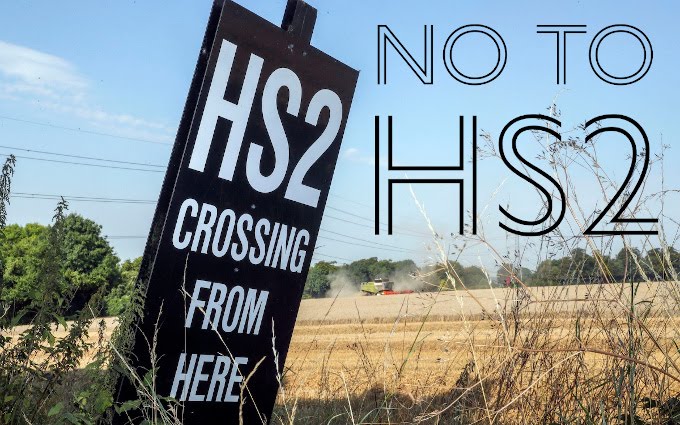How fast should railways innovate? The Advanced Passenger Train came about when British Rail imported a team of engineers from the
aerospace industry. As an experimental project it was a success. But the
aim was to introduce these trains into fleet operation. Fortunately a
group of old school BR engineers had their own ideas of pushing mature
technology just a little and were not prevented from pursuing them. The
result was the HST and still no-one has actually got an effective
replacement into service. And the HST itself had its share of teething
troubles which went on for years.
But if we relied on only ever building what was safe from any risk then we'd
be running a railway which didn't look much different from that in the
60's. Or would we?
Steady evolution or evolution by leaps and bounds?
The first 80 years of railways were dominated by steam power,
which continued to play an important role until the 1950s. There was a
steady development and a steady increase in power and performance, but
attempts to move even marginally away from the mature technology of the
time were a failure. Most improvements arose as a response to the
deficiencies of the mature technology, resulting in steady evolutionary
development.
Then came the introduction of electric traction from around 1900 onwards
and that involved the application of robust mature technology and
steady evolutionary progress, with DC or low frequency AC motors.
These were acceptable for short distance routes, but the shortcomings of power cars - poor ride quality - were an issue that was not resolved until the 1970s.
Electrification was given a boost by the development of improved systems
of rectification including solid state devices, which made possible the
introduction of 25kV /50 hz systems with reduced costs, and that paved
the way for a second wave of electrification of main lines. Again the
process was evolutionary and fairly trouble free. In more recent times
we have seen the introduction of variable frequency 3-phase motors which
have made innovations like distributed drive more feasible. There was
nothing new about the concept but it took the development of power
electronics to make them practicable. Again, this has been an
evolutionary development with lots and lots of testing being done.
Internal combustion was another matter. Locomotives with marine diesels
were built quite early in the twentieth century but high powered diesels
designed for constant output direct to a propeller and are inherently
ill-suited to railway conditions. Direct drive is impossible and expensive
electrical transmission systems are needed. As a result, the cost per
horse power was five times that of a steam locomotive and for this
reason they made little progress until the 1950s.
On the other hand, low powered underfloor engined internal combustion engines with
mechanical transmission transferred quite well to the railway
environment and were the basis of the fairly successful DMU programme initiated
in the mid-1950s. I say fairly successful, because the new diesel trains provided an inferior passenger environment to the steam hauled trains they replaced, and this is a problem that has been compounded in recent years with the development of high speed inter-city DMUs, where the concept is even less suitable when the engines are large powerful units.
Apart from the DMU programme, the transition from steam to diesel in
Britain was wasteful and troublesome. Few of the locomotive classes seem
to have been really satisfactory and many were short-lived or needed
expensive fleet modifications. The country is still living with the
consequences today.
In the same period, the cost of rolling stock has increased from around
£6000 per hauled vehicle in 1955 to £1 million today (some would say
even more). Allow a generous factor of 40 for inflation and that is a
real cost increase by a factor of 4. Now whatever else you might say
about the latest trains, they are not four times as fast or four times
as comfortable or four times anything else that is perceptible to the
passenger. Nor are they four times easier to maintain. The might be four
times safer but that is not a matter of cost but a result of putting
the metal in the right place due to the use of FE analysis, and that was
largely sorted out when the mark 3 bodyshell structure was developed.
So it looks as if things have gone well past the point of diminishing
returns.
An alternative history
What would the railway look like if things had gone the way I would have
liked to have seen it go? In the first place, there was no intention in
1955 of getting rid of steam within a decade, as actually happened,
very wastefully Thus electrification would have proceeded much faster,
with both the ECML and WCML and the Midland being wired by the late
1970s, and the core GW routes following by the mid-1980s, after which
the wires would have been extended to places like Aberdeen, Inverness
and Plymouth by 2000, as well as linking routes such as
Southampton-Bristol. Many of the Beeching closures would not have
happened, including such routes as the Great Central and lines in
southern England where there were already signs of development pressure.
Speeds would have crept up, mostly through incremental improvements to
the infrastructure, however, probably not much above 110 mph. The aim
would have been to provide a cost-effective service with affordable
walk-on fares available outside the high peak times.
Such a railway is far from the one Britain actually ended up with.

No comments:
Post a Comment